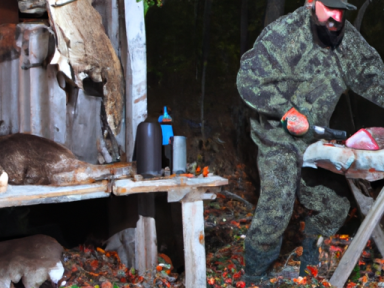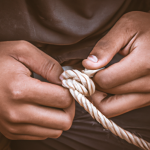Wild Game Dressing: How to Properly and Safely Prepare Your Game for Cooking
The Importance of Wild Game Dressing
When it comes to homesteading, survival, and self-reliance, knowing how to dress wild game is a crucial skill. Not only does it ensure that you have a fresh source of meat, but it also enables you to make the most out of your hunting expeditions. By properly dressing and preparing wild game, you can take advantage of nature’s bounty and increase your self-sufficiency.
The Dangers of Mishandling Wild Game
Before we delve into the steps of game dressing, it’s essential to understand the risks associated with mishandling wild game. Failure to dress and store game properly can lead to various complications, ranging from foodborne illnesses to food spoilage. These risks become even more critical in survival scenarios or when resources are limited.
Wild game, unlike store-bought meat, may harbor harmful bacteria and parasites. These organisms can cause illnesses such as E. coli and salmonella if ingested. Additionally, improper storage and handling can lead to the growth of other harmful microorganisms that can result in food poisoning.
By taking the time to learn the proper techniques for wild game dressing, you can significantly minimize these risks. This knowledge will also empower you to make the most of your catch and ensure that you have a safe and nutritious food source.
The Step-by-Step Process of Wild Game Dressing
Now, let’s dive into the step-by-step process of dressing wild game:
- Prepare your tools: Before you begin dressing your game, gather all the necessary tools. These typically include a sharp knife, gloves, a cutting board, and a clean surface for work.
- Field dressing: Field dressing is the process of removing the internal organs and entrails of the animal shortly after harvesting. Start by making an incision around the anus and carefully cutting through the skin towards the breastbone. Use caution to avoid puncturing any internal organs. Once the incision is made, remove the internal organs, taking care to keep the meat clean and free from contamination.
- Skinning: After field dressing, you can proceed to remove the skin. Start by making a small cut on the legs and gently pulling the skin away from the meat. Use your knife to separate the skin from the meat, being cautious not to cut into the flesh. Continue this process until the skin is completely removed.
- Quartering: Once the skin is removed, it’s time to quarter the animal. This involves separating the animal into manageable pieces. Start by locating the joints and cutting through them with your knife. This will result in separate quarters, which can be further broken down if desired.
- Tag and store: Finally, remember to tag your game as required by regulations. Properly store the game in a cool environment to prevent spoilage and allow the meat to age if desired.
Additional Tips for Wild Game Dressing
Here are a few additional tips to ensure safe and effective wild game dressing:
- Always work on a clean surface and wash your hands thoroughly before and after handling game. This helps prevent cross-contamination.
- Use a sharp knife to ensure clean and precise cuts. Dull knives can lead to accidents and make the dressing process more difficult.
- Properly dispose of the entrails and remains to avoid attracting scavengers or spreading disease.
- Consider aging the meat in a cool environment for a few days before cooking. This can enhance the flavor and tenderness of the meat.
Remember, wild game dressing is a valuable skill that goes hand in hand with homesteading, survival, and self-reliance. By learning and practicing these techniques, you can ensure that your hunting endeavors result in safe and delicious meals for you and your family.




GIPHY App Key not set. Please check settings